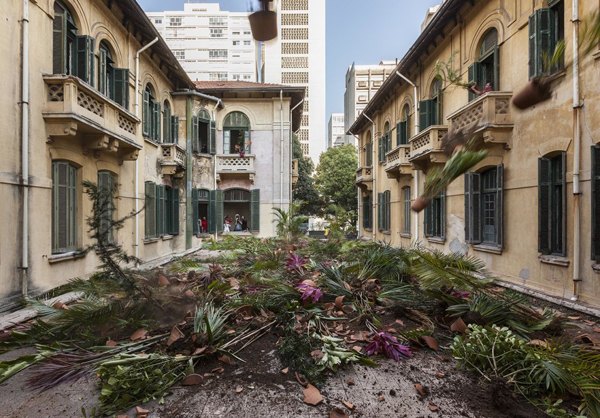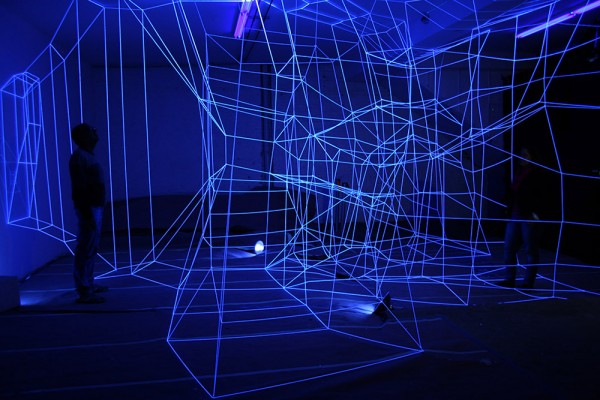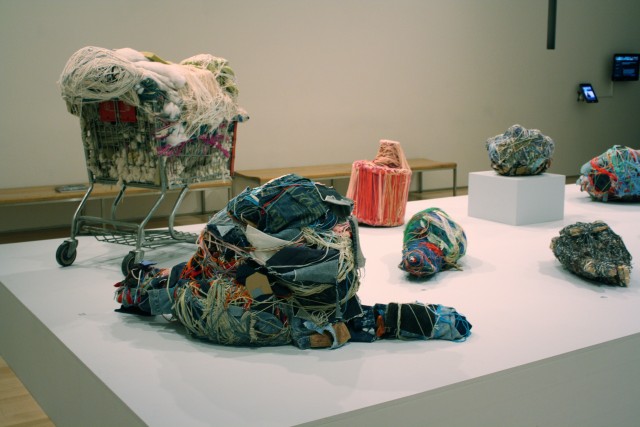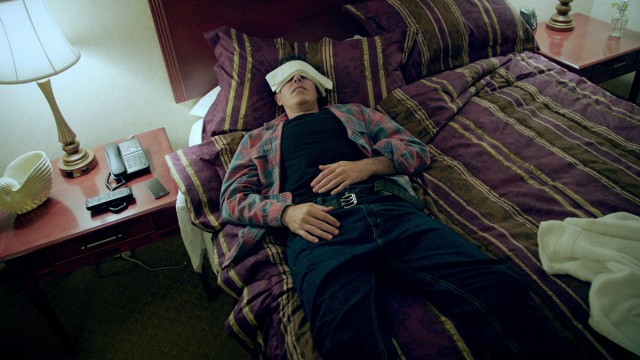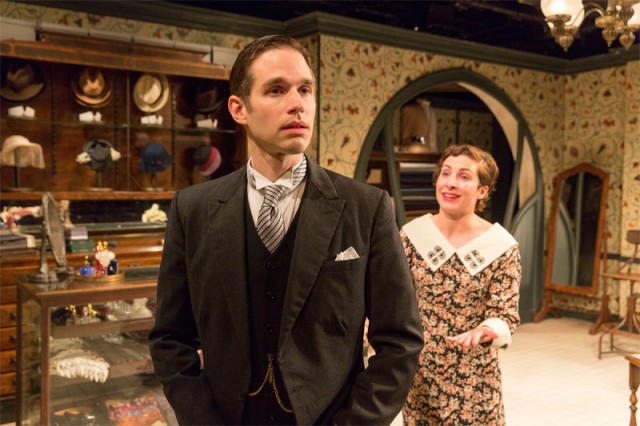
Peter Juhász (Joe Delafield) gets quite a surprise from his wife, Adele (Annie Purcell), in Mint revival of FASHIONS FOR MEN (photo by Richard Termine)
FASHIONS FOR MEN
Mint Theater
311 West 43rd St. between Eighth & Ninth Aves.
Tuesday – Sunday through April 12, $27.50-$65
866-811-4111
www.minttheater.org
A current pair of off-Broadway revivals, one a 1917 Hungarian comedy, the other a 1938 American drama, tackle remarkably similar topics, albeit in very different ways. Written by extremely successful playwrights, each follows an overly kind business owner dealing with relationship issues and financial problems, featuring a number of similar characters and situations, but whereas one ends up stumbling to the finish line, the other reaches it with head held high. The Mint Theater, which resuscitates forgotten, neglected works, breathes fashionable new life into Ferenc Molnár’s Fashions for Men, which could alternately be called The Haberdashery Around the Corner. Joe Delafield stars as Peter Juhász, the tall, proper owner of a reputable clothing shop catering to a wealthy, annoying clientele. He has such a gentle, forgiving nature that he can’t get angry when one of his employees, Oscar (John Tufts), steals his wife, Adele (Annie Purcell), and they take off with a hefty sum of cash Peter had set aside in an account for her. Peter doesn’t want to go back to his primary backer, the fabulously wealthy, playfully pompous Count (Kurt Rhoads), an older gentleman who has his eyes on Peter’s beautiful young employee Paula (Rachel Napoleon). Meanwhile, another of Peter’s salesmen, Philip (Jeremy Lawrence), watches all the shenanigans with knowing glances. The second act, which takes place in the Count’s extravagant estate, gets bogged down in repetitive slapstick as Peter is determined to protect Paula’s purity, but the first and third acts, set in Daniel Zimmerman’s wonderfully designed haberdashery, are a joy. The cast, dressed in appropriate finery by costumer Martha Hally, is uniformly excellent, with particularly keen turns by Rhoads and Delafield, who is so up-to-snuff playing the absurdly good Peter you’ll want to slap him around to get him to finally face reality and stand up for himself. Director Davis McCallum (London Wall, The Few) keeps it all flowing smoothly in a way that would make Ernst Lubitsch proud. Mint artistic director Jonathan Bank has tweaked Benjamin Glazer’s 1921 translation with the help of Agnes Niemitz and Gábor Lukin, Molnár’s great-grandson; the original English-language version opened on Broadway in December 1922. Molnár might not be a household name, but several of his works are, adapted into such films as Carousel, The Guardsman, The Swan, The Devil, and One, Two, Three.
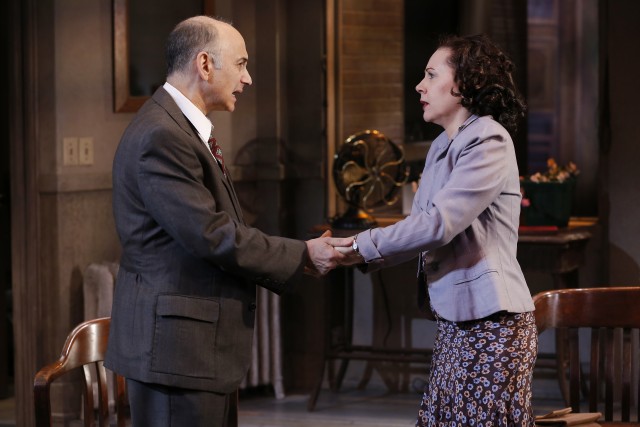
Dr. Stark (Ned Eisenberg) has quite a surprise for his wife, Belle (Marilyn Matarrese), in Pecadillo revival of ROCKET TO THE MOON (photo by Carol Rosegg)
ROCKET TO THE MOON
Theatre at St. Clement’s
423 West 46th St. between Ninth & Tenth Aves.
Tuesday – Sunday through March 28, $75-$95
www.thepeccadillo.com
Another troupe that rediscovers classic works, the Peccadillo Theater Company, has brought back Clifford Odets’s Rocket to the Moon in a solid production that ultimately reveals the play’s severe flaws. One of America’s most important and influential writers, Odets penned such plays as Golden Boy, The Big Knife, Awake and Sing! and The Country Girl and such films as None but the Lonely Heart, Humoresque, and Sweet Smell of Success. In Rocket to the Moon, which debuted on Broadway in 1938 with Luther Adler, Morris Carnovsky, Leif Erickson, and Sanford Meisner, Odets tells the sad-sack story of Dr. Ben Stark (Ned Eisenberg), a mensch of a dentist with a shrewish, overbearing wife, Belle (Marilyn Matarrese), who is none too thrilled with the sexy new office girl, nineteen-year-old Cleo Singer (Katie McClellan). Belle is also not happy that her husband is letting his fellow dentist, dour tenant Phil Cooper (Larry Bull), fall well behind on his rent. Despite their financial problems, Belle does not want Ben to accept a generous offer from her dapper, estranged father, Mr. Prince (Jonathan Hadary), to set him up in a fancier office in a better location and with more modern technology. At the same time, Ben is none too thrilled that the fabulously wealthy, playfully pompous Mr. Prince has his eyes on Cleo, as does one of Ben’s patients, a hotshot swinger named Willy Wax (Lou Liberatore) who is zeroing in on her as his next conquest. Meanwhile, Ben’s podiatrist neighbor, Frenchy (Michael Keyloun), watches all the shenanigans, sharing his perverse opinion seemingly without a care in the world. The cast is uniformly excellent, with particularly fine turns by Bull, McClellan, and Odets veteran Eisenberg, who excels as the infuriatingly indecisive Ben — getting Ben to stand up for himself is like pulling teeth. Precisely directed by Dan Wackerman (Ten Chimneys, The Man Who Came to Dinner), Rocket to the Moon soars in the first act, but the second act gets bogged down in a dreary battle between Mr. Prince and Dr. Stark over Cleo that is dated, misogynistic, and just plain tiresome. Odets tries too hard to make grand statements about family and responsibility in an America that is still rattling from the Depression and soon to get involved in WWII; the play works best when it gets right down to business, delving into the very human need for intimacy, understanding, compassion, and, most of all, love. But that’s precisely what you’ll find, along with a wry sense of humor, at the Mint’s stellar revival of Fashions for Men.
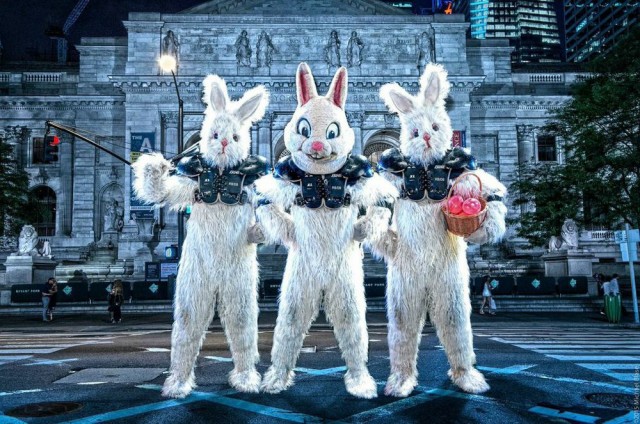
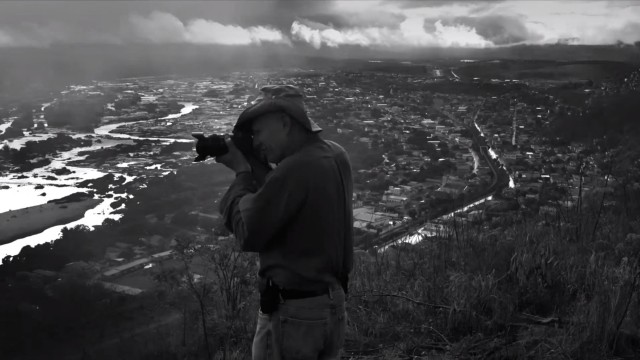
 Over the course of his storied five-decade career, German-born auteur and photographer Wim Wenders has alternated between making documentaries, primarily about other artists (
Over the course of his storied five-decade career, German-born auteur and photographer Wim Wenders has alternated between making documentaries, primarily about other artists (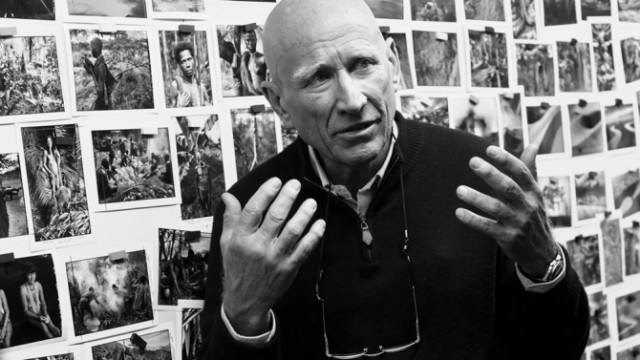
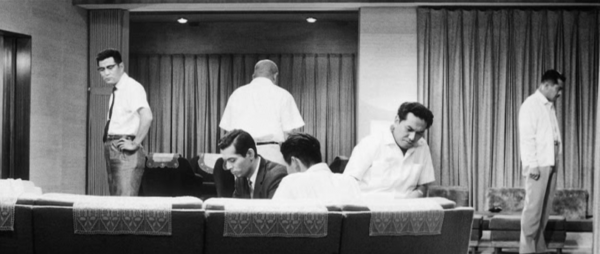
 On the verge of being forced out of the company he has dedicated his life to, National Shoes executive Kingo Gondo’s (Toshirō Mifune) life is thrown into further disarray when kidnappers claim to have taken his son, Jun (Toshio Egi), and are demanding a huge ransom for his safe return. But when Gondo discovers that they have mistakenly grabbed Shinichi (Masahiko Shimazu), the son of his chauffeur, Aoki (Yutaka Sada), he at first refuses to pay. But at the insistence of his wife (Kyogo Kagawa), the begging of Aoki, and the advice of police inspector Taguchi (Kenjiro Ishiyama), he reconsiders his decision, setting in motion a riveting police procedural that is filled with tense emotion. Loosely based on Ed McBain’s 87th Precinct novel King’s Ransom, Akira Kurosawa’s High and Low, photographed by longtime Kurosawa cinematographer Asakazu Nakai, is divided into two primary sections: The first half takes place in Gondo’s luxury home, orchestrated like a stage play as the characters are developed and the plan takes hold. The second part of the film follows the police, under the leadership of Chief Detective Tokura (Tatsuya Nakadai), as they hit the streets of the seedier side of Yokohama in search of the kidnappers. Known in Japan as Tengoku to Jigoku, which translates as Heaven and Hell, High and Low is an expert noir, a subtle masterpiece that tackles numerous socioeconomic and cultural issues as Gondo weighs the fate of his business against the fate of a small child; it all manages to feel as fresh and relevant today as it probably did back in the ’60s.
On the verge of being forced out of the company he has dedicated his life to, National Shoes executive Kingo Gondo’s (Toshirō Mifune) life is thrown into further disarray when kidnappers claim to have taken his son, Jun (Toshio Egi), and are demanding a huge ransom for his safe return. But when Gondo discovers that they have mistakenly grabbed Shinichi (Masahiko Shimazu), the son of his chauffeur, Aoki (Yutaka Sada), he at first refuses to pay. But at the insistence of his wife (Kyogo Kagawa), the begging of Aoki, and the advice of police inspector Taguchi (Kenjiro Ishiyama), he reconsiders his decision, setting in motion a riveting police procedural that is filled with tense emotion. Loosely based on Ed McBain’s 87th Precinct novel King’s Ransom, Akira Kurosawa’s High and Low, photographed by longtime Kurosawa cinematographer Asakazu Nakai, is divided into two primary sections: The first half takes place in Gondo’s luxury home, orchestrated like a stage play as the characters are developed and the plan takes hold. The second part of the film follows the police, under the leadership of Chief Detective Tokura (Tatsuya Nakadai), as they hit the streets of the seedier side of Yokohama in search of the kidnappers. Known in Japan as Tengoku to Jigoku, which translates as Heaven and Hell, High and Low is an expert noir, a subtle masterpiece that tackles numerous socioeconomic and cultural issues as Gondo weighs the fate of his business against the fate of a small child; it all manages to feel as fresh and relevant today as it probably did back in the ’60s.
